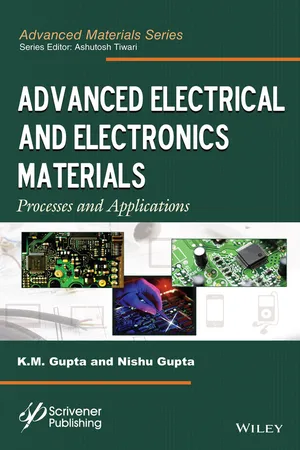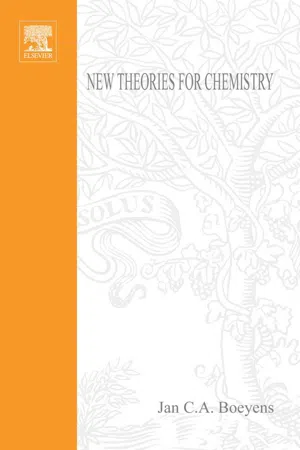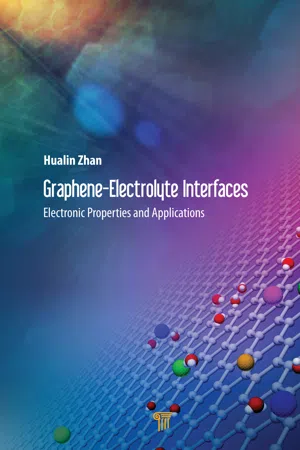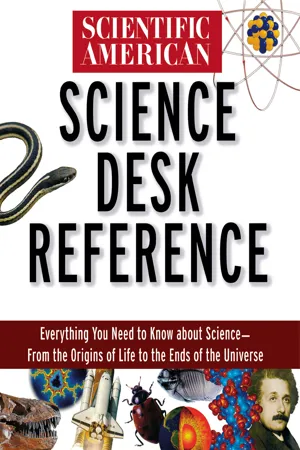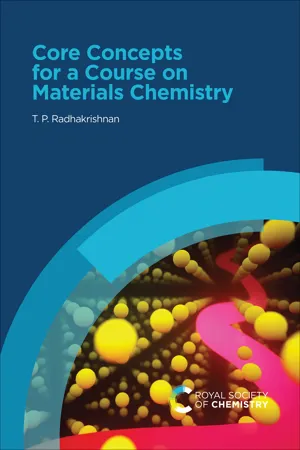Physics
Electron Theory
The electron theory is a fundamental concept in physics that explains the behavior of electrons in atoms and materials. It describes how electrons move within an atom's energy levels and how they contribute to electrical conductivity and other properties of matter. This theory forms the basis for understanding phenomena such as electricity, magnetism, and chemical bonding.
Written by Perlego with AI-assistance
Related key terms
Related key terms
1 of 4
Related key terms
1 of 3
7 Key excerpts on "Electron Theory"
- eBook - ePub
Advanced Electrical and Electronics Materials
Processes and Applications
- K. M. Gupta, Nishu Gupta, Ashutosh Tiwari(Authors)
- 2015(Publication Date)
- Wiley-Scrivener(Publisher)
Chapter 4Conductive Materials: Electron Theories, Properties and Behaviour4.1 Electrons and Their Role in Conductivity
Electron is the most important particle of an atom. The electrical nature of atoms is attributed to a highly systematic configuration of electrons in them. They are universal constituent since all the metals contain them in their structure. Electrons have similar behaviour in conductors, semiconductors, dielectrics, magnetic or superconducting materials. They also have same behaviour in all applications whether a computer, television, radiography, or electrical conduction.4.1.1 Valence and Free Electrons
Electrons play vital role in determining electrical properties of metals. Valence electrons in the outermost orbit of an atom decide the manner in which they respond to external effects. For example, due to their free movement within the metal they provide conduction, but on actuation by thermal energy they jump over the energy gap in semiconductors. As a whole the arrangement of electrons in an atom, behaviour of valence electrons, and inter-atomic interactions govern the electrical properties (conduction as well) of materials.ELECTRON THEORIES4.2 Electron Theories of Solids
The electrical properties of solids are determined by the electrons in the outermost orbit of an atom. The valence electrons in an atom decide the manner in which they will respond to external effects. The cohesive and repulsive forces, and the potential energy in the formation of atomic bond are not sufficient to describe many properties of solids. Various electron theories have been propagated to study the behaviour of solids. The classical free Electron Theory and other acceptable theories in this regard are - eBook - ePub
- Jan C.A. Boeyens(Author)
- 2005(Publication Date)
- Elsevier Science(Publisher)
[53] , untouched by quantum electrodynamics (QED). The lip service paid to wave mechanics and electron spin, even in elementary chemistry textbooks, does not alter the fact that the curly arrow of chemistry signifies no more than redistribution of negative charge. By holding out the prospect of an intelligible structure of the electron, quantum mechanics created the expectation that chemistry could be reduced to a subset of physics, explaining all chemical interactions as quantum effects. The result of this unfulfilled promise is that chemistry is without a theory today. It is true that physics and chemistry both study the relationship between matter and energy but, while physics is concerned with matter that moves, chemistry examines how matter changes from one form into another. The subject matter may be the same but the emphasis is different.Because of the inadequacies of QED a fundamental theory of electrode processes is still lacking. The working theories are exclusively phenomenological and formulated entirely in terms of ionic distributions in the vicinity of electrode interfaces. An early, incomplete attempt [54] to develop a quantum mechanical theory of electrolysis based on electron tunnelling, is still invoked and extensively misunderstood as the basis of charge-transfer. It is clear from too many superficial statements about the nature of electrons that the symbol e is considered sufficient to summarize their important function. The size, spin and mass of the electron never feature in the dynamics of electrochemistry.Theoretical chemistry must search for realistic models and alternative interpretations of basic theory that accord with the time-honoured empirical concepts of chemistry. Above all chemistry needs a theory of the electron, the one object at the heart of all chemical change.4.2 Historical Development
For a hundred years since its discovery the electron has provided a topic for intense study and speculation. It has a fixed charge, mass and spin: each of these is of fundamental importance. The discovery has spawned an enormous electronic industry and the science of chemistry is to a large extent a study of electron distributions and transfer. There is still no consistent theory of the electron. Particle physicists - the ultimate experts - simply describe it as a stuctureless point particle. In the context of atomic physics and chemistry this description is meaningless in view of the demonstrable structure of atoms, molecules and crystals, largely derived in terms of the classical Thomson model of scattering at an electron. Following Jackson [55] the scatter of electromagnetic radiation (e.g - eBook - ePub
- Jerry Marion(Author)
- 2012(Publication Date)
- Academic Press(Publisher)
CHAPTER 9Classical Electron Theory
Publisher Summary
The treatment of the interaction of electromagnetic radiation with bulk matter can usually be handled quite adequately in classical terms. Before the advent of quantum theory, however, a variety of interesting effects was described in terms of a mechanical theory that treated the classical interaction of the electromagnetic radiation with discrete charges. This approach is known as the classical Electron Theory of matter and takes two forms, both of which are concerned with the motion of electrons. In one form, the electrons are considered to be free—that is, not attached to atoms. In the other form, the electrons may be bound in atoms. Such electrons can still be set into motion by an electromagnetic wave, but the motion is an oscillatory one because an electrical restoring force exists between the negative electron and the positive atomic nucleus.9.1 Introduction
The treatment of the interaction of electromagnetic radiation with bulk matter can usually be handled quite adequately in classical terms. However, when it is necessary to inquire into the interaction between electromagnetic radiation and microscopic matter (i.e., individual electrons, atoms, or molecules), the description must properly be made in terms of quantum theory. Before the advent of quantum theory, however, a variety of interesting effects had been described in terms of a mechanical theory which treated the classical interaction of electromagnetic radiation with discrete charges. This approach is known as the classical Electron Theory of matter and takes two forms, both of which are concerned with the motion of electrons. In one form the electrons are considered to be free , i.e., not attached to atoms. This is the case, for example, in a metal or in an ionized gas in which the motion of the electrons can constitute a current. On the other hand, the electrons may be bound - eBook - ePub
Graphene–Electrolyte Interfaces
Electronic Properties and Applications
- Hualin Zhan, Hualin Zhan(Authors)
- 2020(Publication Date)
- Jenny Stanford Publishing(Publisher)
Chapter 2Electrons in SemiconductorsElectron transport phenomena in solid materials have been of great interest to physicists since the late nineteenth century when J. J. Thomson discovered electrons. Construction of a systematic theory for electrical conductivity therefore became necessary. During the course of this search, different models appeared, some of which successfully explained the experimental results in a qualitative way. However, the failure to quantitatively analyze experiments using these theories stimulated further investigation. It is worth noting that although the early theories for electron transport are no longer valid under certain conditions, they are still of importance when used appropriately.The first theory constructed by P. Drude in 1900 studied the excellent electrical conduction in metals where electrons are considered as collisional charged particles, as metals occupy around two thirds of elements in the periodic table. The Drude model has also shown an exceptional success in describing the electrical conductivity in semiconductors. Semiconductor is a material whose electrical conductivity falls between that of a metal and an insulator, which could be controlled externally (such as temperature, electric field, light illumination, etc.). While Drude model and its more sophisticated companion, Boltzmann transport theory, are useful for predicting the classical electrical conductivity and some plasmonic behavior, the conductivity transition in semiconductors, among many other unconventional nanoscale phenomena, is bettered described by later developed quantum theory.Graphene-Electrolyte interfaces: Electronic Properties and Applications Hualin ZhanCopyright (c) 2020 Jenny Stanford Publishing Pte. Ltd. - eBook - ePub
- (Author)
- 2008(Publication Date)
- Trade Paper Press(Publisher)
quantum theory, superseded Newtonian mechanics in the interpretation of physical phenomena on the atomic scale and is the theory that energy (the capacity for doing work) does not have a continuous range of values, but is, instead, absorbed or radiated discontinuously, in multiples of definite, indivisible units called quanta. Just as earlier theory showed how light, generally seen as a wave motion, could also in some ways be seen as composed of discrete particles (photons), quantum theory shows how atomic particles such as electrons may also be seen as having wavelike properties. Quantum theory is the basis of particle physics, modern theoretical chemistry, and the solid-state physics that describes the behavior of the silicon chips used in computers.Subatomic Logic http://www.sciam.com/explorations/091696explorations.htmlPart of a larger site maintained by Scientific American , this page provides information on the recent progress of scientists who are attempting to harness quantum physics to run a lightning fast, super-charged “quantum computer.” This article explains how a quantum computer would work and why it would be so much faster than silicon-based computer systems.Quantum Age Begins http://www-history.mcs.st-and.ac.uk/~history/HistTopics/The_Quantum_age_begins.html Web site run by St. Andrews University, Scotland chronicling the discovery of quantum theory.thermodynamics
Thermodynamics deals with the transformation of heat into and from other forms of energy. It is the basis of the study of the efficient working of engines, such as the steam and internal combustion engines. The three laws of thermodynamics are: (1) energy can be neither created nor destroyed, heat and mechanical work being mutually convertible; (2) it is impossible for an unaided self-acting machine to convey heat from one body to another at a higher temperature; and (3) it is impossible by any procedure, no matter how idealized, to reduce any system to the absolute zero of temperature (0K/−273°C/−459°F) in a finite number of operations. Put into mathematical form, these laws have widespread applications in physics and chemistry. - T P Radhakrishnan(Author)
- 2022(Publication Date)
- Royal Society of Chemistry(Publisher)
4 Electrical Properties4.1 Free Electron Theory
Free Electron Theory is one of the earliest attempts to systematically understand the properties of metals. The theory developed by Drude, Sommerfeld, and others provides useful insights into many properties of metals including heat capacity, electrical conduction (Ohm's law), thermal conduction, etc .- However, it fails to explain the basis for the differences between metals and semiconductors.
- The free electron model takes into account the valence electrons of the atoms that constitute the solid. It may be noted that the ion cores (nucleus and core electrons), occupy only about 15% of the volume of the crystal in typical bcc metals.
4.1.1 Free Electron Fermi Gas
The following are the basic assumptions of the free Electron Theory.- The total energy of electrons is all kinetic.
- Potential energy is fully neglected. Force between electrons is assumed to be zero (independent electron approximation); similarly forces between the electrons and the ion cores are neglected (free electron approximation).
- The electrons are free to move around, behaving like non-interacting gas molecules in a vessel; however, they are subject to the Pauli principle. This leads to the description: free electron Fermi gas .
- The Schrödinger equation, considering only the kinetic energy with potential energy U = 0 is:
- Imposing the boundary conditions, ψ n (0) = ψ n (L ) = 0, solutions for the wave function are: (A is the normalization constant, L is the length of the box (crystal), n (=1, 2 …)is the quantum level with the associated wavelength, .
- Note that the solution can also be written as: where ; the electron wave vector is the quantum number.
- The corresponding energy is:
The energy levels (free electron orbitals) are filled obeying the Pauli principle. Each level takes two electrons with spin quantum numbers, m S = +½ and m S- eBook - ePub
From Atoms to Higgs Bosons
Voyages in Quasi-Spacetime
- Chary Rangacharyulu, Christopher J. A. Polachic, Chary Rangacharyulu, Christopher J. A. Polachic(Authors)
- 2019(Publication Date)
- Jenny Stanford Publishing(Publisher)
how things really are . This is an exemplar of quasirealism, and the consequences for the electron are unfortunate: An entity that appeared in early experiments with physical definiteness was transformed into a phantom hybrid through a fundamentalist reading of the sacred text of quantum theory.7.7 Electrons in Quantum Electrodynamics
Besides the mass and electric charge of a particle, the next important classical attribute is the magnetic dipole moment , a measure of an electron’s response to an external magnetic field. Particles like electrons that have nonzero intrinsic spin are nature’s fundamental magnetic entities, and their behavior in a magnetic environment will be governed by this property.Nuclear and particle physicists have developed elaborate mathematical schemes to calculate electric and magnetic properties of particles and nuclei, both for those of finite sizes and of various shapes. In all these theoretical schemes, we take a point object as a reference, calculate its properties for specific mass, charge, and spin parameters, and estimate how much the measured values deviate from these. The only way to know if the theory is reasonable is to compare with an experiment measuring interactions with external forces and fields. We can let the system be influenced by an external electromagnetic field, or, even worse, we can make the system undergo transitions between its characteristic structural states. Then we draw quantitative conclusions from these measurements within the framework of our favorite theories and models.Quantum electrodynamics (QED), an advanced version of quantum theory, provides the framework for these calculations. QED incorporates aspects of Einstein’s special theory of relativity to describe the interactions of particles like the electron with electric and magnetic fields and is hailed as the most rigorous and precise theory of these phenomena. These interactions are modeled by a series of exchanges between the particle and bosons, which transmit the field’s affects. The exact details of the interaction mechanism can become quite complicated, and the associated mathematics increasingly time-consuming and difficult, but the extra effort occasionally yields an output of the theory that fits the experimental data with increasing precision. In the last 60 years or so, a great deal of theoretical and experimental effort has been invested, by many people, toward this end. The motivation has been twofold: first, to establish QED as a precision theory that can be applied to arbitrarily large- and small-scale phenomena; second, to set the limits at which QED breaks down, always aware that this eventuality may shed light on “new physics.”18
Index pages curate the most relevant extracts from our library of academic textbooks. They’ve been created using an in-house natural language model (NLM), each adding context and meaning to key research topics.
Explore more topic indexes
Explore more topic indexes
1 of 6
Explore more topic indexes
1 of 4
